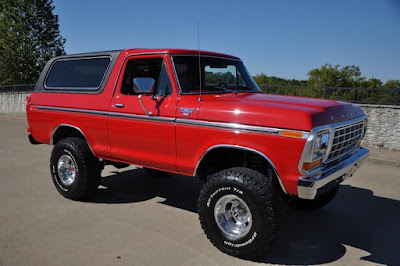Hard to believe that in 1967 when The Ford Motor Company's Mercury Cougar was first introduced, not only did it win Motor Trend's "Car of the Year" honors, but some automobile scribes christened it an "American Jaguar". Although that claim was rather hyperbolic and Motor Trend has given their "golden calipers" to far more scrubs than hall of famers over the years, by 1974 that "American Jag" became a bloated, soggy and slow "personal luxury car". Our triple-blue subject (blue paint, blue vinyl top and blue interior) hails from the bicentennial model year of 1976.
How in the name of Watergate, bell bottoms, disco and pet rocks did that lithe, sexy little sports car get so fat? And in just eight model years too?
Well, for starters, it was amazing that Ford whipped up the original Cougar that was inexplicably equal parts pony car and luxury car and oozed European elan in the first place. Even if it was just a long wheelbase Mustang with some tasteful sheet metal and a really nice interior. Without question, however, it stole as much thunder from the new for '67 Mustang as General Motors dynamic pony car duo (Chevrolet Camaro and Pontiac Firebird) did. That said, in the vaunted halls of Dearborn, many suits had the Cougar in their literal Lincoln-Mercury crosshairs.
Since (at first) Cougar and Mustang were bolted together at the bumper, when Mustang got an update, so did the Cougar.
Hence the longer, wider, heavier and flabbier 1969-1970 Cougar and then the abortive 1971-1973 "big" Mustang and Cougar. Although, in fairness, in a vacuum, the 1969 and 1971 Mustang and Cougar weren't all that bad. Well, looking at least. However, they were damned by comparison because of what came before them. Had the 1971 Mustang been a new "Thunderbird" and the Cougar been a Montego or "Marauder" and things might have been different. Might. Have been. Who knows. Fun to ponder, though.
Ye olde tipping point was model year 1974. With the crash landing of the 1971-1973 Mustang, under the leadership of Lee Iacocca, who'd take credit for sunny day if he could have, seeing the rising popularity of imports and smaller cars, Ford rolled out the Mustang II on an elongated Pinto chassis. Mustang fans cried foul, not foal of course, but the Mustang II sold almost as well as the original Mustang did. The October 1973-March 1974 OPEC embargo obviously had something to do with that but don't tell Lido that.
Since Lincoln-Mercury had also been peddling the Ford of Europe sourced Capri (since 1971), it made no sense to also offer a Pinto-based "Cougar II". So, instead, to give Mercury a Chevrolet Monte Carlo fighter, Ford product planners and marketing wonks festooned "Cougar" to the flanks of a Montego coupe.
All but impossible to say or tell what the difference was between a Montego two-door and a Cougar was, but Cougar sales were roughly double over 1973 although roughly half of what they were in 1967. Remarkable too since model year 1974 was a dramatically down year considering the impact of the OPEC embargo.
For 1977, Mercury dropped "Montego" from their nameplate lineup and all Mercury intermediates became "Cougar's". There was a Cougar coupe that was all but indistinguishable from a new for 1977, and very successful, downsized Ford Thunderbird. Prior to that, Thunderbird was built on the same chassis as the Lincoln Continental Mark series.
The Mercury Cougar and Ford Thunderbird, like the Cougar and Mustang were from 1967 through 1973, were corporate cousins through 1997. From 1998 through 2002, Lincoln-Mercury sold a front-wheel-drive, Ford Contour sourced Cougar. More of death throe or spasm as the personal luxury car market was withering, the little Cougar sold well (88,000 units) at first, but sales dropped by some fifty percent each subsequent model year.
Best or worst that can be said of 1974-1976 Mercury Cougar's, in retrospect, is that rarely had something so much more been actually so much less. Check values of these beasts compared to even the 1971-1973 cats that came before them to say nothing of the '69-'70 models and of course, the painfully cool '67 and '68's. This one's for sale in Kokomo, Indiana with an asking price of $9,850. Price includes ash trays and cigarette burnt upholstery.































